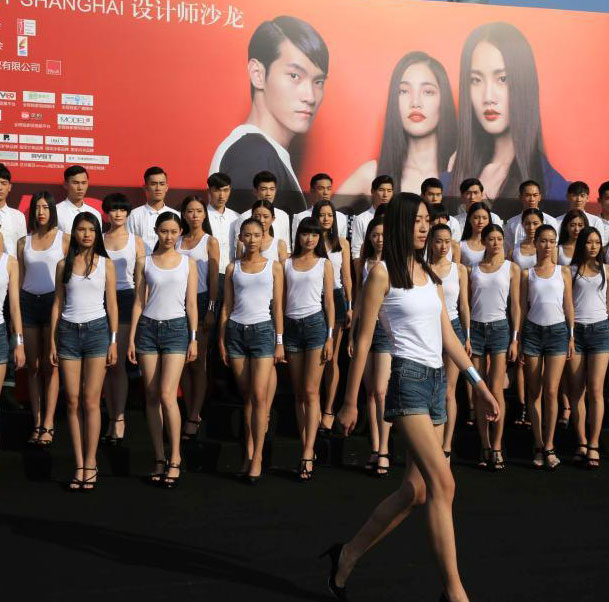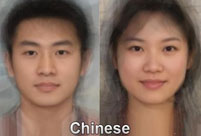 Fan Bingbing's "Queen style" in new play
Fan Bingbing's "Queen style" in new play
 Lingerie show at 2014 Miss China
Lingerie show at 2014 Miss China
 Top 10 pricey destinations for studying abroad
Top 10 pricey destinations for studying abroad
 Female bus driver drives Land Rover for commuting
Female bus driver drives Land Rover for commuting
 J-10 fighters show aerobatic stunts in smog-free sky
J-10 fighters show aerobatic stunts in smog-free sky
 Top 10 charming female soldiers of the PLA
Top 10 charming female soldiers of the PLA
 Charming contestants of Shanghai Int’l Model Contest
Charming contestants of Shanghai Int’l Model Contest
 Most amazing chi-pao beauties
Most amazing chi-pao beauties
 7 deadly animal attacks
7 deadly animal attacks
 Picturesque autumn scenery of Hongshan Army Horse Ranch
Picturesque autumn scenery of Hongshan Army Horse Ranch
Deputies from Public Finances Directorate-General of France (DGFIP) and from French and Chinese enterprises widely praised China’s efforts to improve tax service, after their recent meeting with a Chinese tax delegation.
With China increasingly engaging in world affairs and closer international taxation cooperation, tax service in China has been attracting growing attention over the world, especially after Wang Jun, Commissioner of the State Administration of Taxation (SAT), signed the Multilateral Convention on Mutual Administrative Assistance in Tax on behalf of the Chinese government at OECD headquarters in Paris in 2013
DGFIP officials and enterprise representatives thought highly of China’s newly published National County-level Tax Administrations Tax Service Standard. They regard the Standard as a significant action. With the help of unifying tax service standards across the country, it will benefit both taxpayers and collectors while improving tax environment in China.
“The Standard will benefit those enterprises at home and abroad. In other words, it will not only work for local enterprises but also help foreign invested enterprises in China”, commented Daoxin Hu, the head of the delegation and the director of Jiangsu provincial office, SAT, at the meeting.
The Standard, following the trends that tax administration around the world switching from regulation-oriented to service-oriented style, meets the Chinese government’s demands to transform its functions and improve working style, and summarizes the methods and experience of tax service in the past decades. It is the first time that tax authorities across the country have unified tax service items, procedures and time limits, and set up basic and advanced service standards, which indicates the end of the chaos in tax service standards across China and signifies a new start of the process of modernizing tax service.
The idea “maximizes the convenience of taxpayers, maximizes the regulation of tax administrators” stated in the Standard has won approvals by DGFIP tax officials. Therefore, DGFIP officials were pleased to say that the Standard, while benefitting taxpayers, played an important role in clearly guiding both taxpayers and tax administrators in unbalanced and complex environments across China.
Since October 1, the Standard has applied to thousands of county-level tax administrations, causing hundreds of items and thousands of rules in tax service affected. The Standard adjusts, reduces, compresses and optimizes tax service. For instance, it adjusts the process of investigation and verification to increase efficiency, the China tax delegation introduced when meeting with enterprise representatives.
In order to save taxpayers’ efforts and increase taxation efficiency, the Standard has streamlined procedures, simplified steps, reduced time, and improved results by transferring to markets, society and grass-roots what is not expected to do by tax administrations. On average, it can reduce by over 30 percent of the documents, procedures, frequency and consumed time for taxpayers, the delegation explained.
Enterprises welcome the Standard. Thanks to increased efficiency and reduced burden brought by the Standard, taxpayers can pay taxes more effectively and conveniently, enterprise representatives said. What is more, the Standard enhances the transparency of tax administration in China, increases the credibility of tax authorities, and improves convenience and reliability of investment in China, saidFrench enterprise representatives. Huawei, a Chinese enterprise which pays much attention to tax policy and service in China, also stated that the Standard will also urge tax administrations to safeguard the interest of taxpayers.
Tax authorities and enterprise representatives both agreed that the Standard will take tax service in China to a brand new stage, provide investors and entrepreneurs with better tax environment, and facilitate the process of taxation modernization in China.
 U.S. air force transport planes row up on base
U.S. air force transport planes row up on base Post-85s female pilots and their mission
Post-85s female pilots and their mission Century-old public bath closes door in Beijing
Century-old public bath closes door in Beijing Shocking! Photos of Chinese fighters revealed
Shocking! Photos of Chinese fighters revealed World's most intimidating nuclear weapons
World's most intimidating nuclear weapons Standard faces for each countries in the world
Standard faces for each countries in the world Netizens fall in love with champion swimmer Ning Zetao
Netizens fall in love with champion swimmer Ning Zetao Vibrant 21-year-old and her own Cheongsam brand
Vibrant 21-year-old and her own Cheongsam brand Fashion style: Faye Wong vs Cecilia Cheung
Fashion style: Faye Wong vs Cecilia Cheung Top 10 most dangerous jobs in the world
Top 10 most dangerous jobs in the world  Top 10 fifth generation jet fighters in the world
Top 10 fifth generation jet fighters in the world Top 10 Chinese goddesses
Top 10 Chinese goddesses  Top 20 hottest women in the world in 2014
Top 20 hottest women in the world in 2014 Top 10 pure beauties in showbiz
Top 10 pure beauties in showbiz  Top 10 world's highest-paid models 2014
Top 10 world's highest-paid models 2014 The most gorgeous Chinese women
The most gorgeous Chinese women Top 10 most handsome faces in Asia
Top 10 most handsome faces in AsiaDay|Week|Month